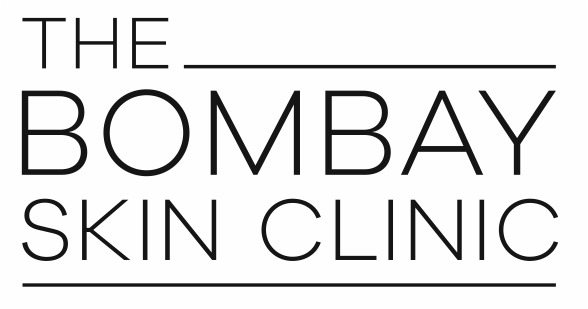Overview | Types of fillers | Treatment steps | Questions for the doctor | Post-procedure care
The lips are one of the most aesthetically appealing aspects of the face. We love to make our lips appear full with the help of many lip care products like gloss and lipsticks. However, there may be times when we wish our lips appeared fuller naturally. This is where a lip filler treatment steps in to save the day.
I do get a lot of questions from my patients on lip augmentation. With so many A-list celebrities like Kylie Jenner openly advocating lip fillers, many women are opening up to the idea of cosmetically enhancing their lips. And, I say why not? As long as you have the right and complete information, cosmetic treatments are here for your benefit. Today, I will give you an overview of what it means to have lip filler treatment as well as answer some frequently asked questions in this article to help you make up your mind.
What are lip fillers?
Simply put, lip fillers do exactly as their name suggests. They are injectable substances that naturally plump up the lips and give added volume. A dermal filler is most commonly used for this procedure and there are many different types of dermal fillers. The American Academy of Dermatology notes how fillers can restore the lost fullness of our lips that happens due to age.
According to the National Health Service UK, it is important to note that lip fillers are not permanent. They can last anywhere between a few months to a year.
What type of lip fillers are used?
Dermatologists use different types of lip fillers. They will choose the lip filler best suited to your lip goals. The most common lip fillers are:
- Restylane – Restylane is a filler based on hyaluronic acid. It helps add definition and leaves the lips with a natural look. It also helps keep moisture in the lips. Johns Hopkins Medicine notes how hyaluronic acid is a natural part of the connective tissue of the skin and thereby, helps give a natural fuller look. The effects of Restylane can last anywhere between six to nine months. Overall, Restylane is known for results that lead to firmer lips.
- Juvederm – Juvederm Volift and Ultra XC are also used by dermatologists for a longer effect that can last from six months up to one year. It has more hyaluronic acid and the lips gain a good amount of volume. Another variant is the Juvederm Volbella, which is low in hyaluronic acid but offers stable results that last up to one year and it adds hydration to heal cracked lips. Overall, Juvederm is known for results that lead to softer lips.
There are options to get permanent fillers; however, I do advise against these. Temporary fillers are better, so you have the option to change how you look after they wear out.
What is the treatment procedure when getting lip fillers?
Before heading for your actual treatment, your dermatologist may advise you to avoid blood thinners. Make sure to follow their instructions carefully.
The treatment for lip augmentation does not take too long. The procedure begins with the dermatologist cleansing the area that is to be treated. This is followed by the application of an anesthetic like a topical cream. This cream will take around 20 minutes to numb the area. Or, you may be given an injection to numb the area. Then, the lip filler treatment will begin with injections being administered. The entire process should then take around 20 minutes, post which you can get back to your routine.
In some cases, the dermatologist may recommend you an allergy test if you are prone to allergies. You would need to await the results of this test before getting the lip filler treatment done.
Who is a suitable candidate for lip fillers (and who isn’t)?
Almost anyone who wants to add volume to their lips may consider lip augmentation. In most cases, lip augmentation is done by patients who have lost volume in their lips as a part of aging. However, if the signs of aging are too severe, lip augmentation might not suit you and the dermatologist might recommend other methods of reaching your beauty goals.
Lip augmentation is now not only used for aging lips but it also plays a very important role in adding beauty and enhancing the facial features. Lip filler can be used to correct an asymmetrical smile, gummy smiles, and drooping of corners of the lips. Lip fillers are also used to project the lips for a pouty look. If your lips are too thin and puckered, it lends a very angry appearance, so fillers help to soften the lips and enhance the look.
Are lip fillers safe?
Lip fillers are one of the safest cosmetic procedures out there. They have been used for several years across the globe. So, you can go ahead with this treatment and not have any worries. I would like to add here something that I personally believe in and that is backed by the National Health Service UK – lip fillers are safe as long as they are done by a qualified dermatologist.
What are some questions to ask your dermatologist before the treatment?
Before you get a lip filler treatment done, it is best to have a talk with your dermatologist and let them know your medical history. Also, make a note of any questions that you may want to ask them. Some of the questions that I recommend you ask are:
- How long will the treatment last?
- How do I prepare myself for treatment?
- How do I care for my lips after the treatment?
- Are there any dietary or lifestyle restrictions to be followed after treatment?
- Can I use make-up?
- Are there any specific products that I need to buy?
- How much will the entire treatment cost me?
- What are the possible risks and side-effects that I should be aware of?
- What are your qualifications?
- What product do you use?
Do read up reviews of the dermatologist before you get the treatment done. Also, you can take a second opinion from another doctor and finally choose the one you feel the most comfortable with.
Are there any risks involved with the treatment?
Before getting any new treatment done, it is always good to have a complete idea of any risks that may be associated with the procedure. Lip augmentation does not involve any real risks; however, there are some side-effects commonly experienced by patients. These side-effects include a few bumps, slight redness, or swelling developing in the treated area. This should subside on its own within a few days. Your dermatologist will advise you on what side-effects you may encounter and how to manage them.
Complications develop in rare cases. Some of these may include:
- Infection
- Lumps in the treated area
- Blood clots
Any kind of pain or discomfort that does not go away on its own should be reported to your doctor immediately. Again, I want you to remember that these risks are very rare and lip filler treatment is quite safe.
What can you expect after the treatment?
This is one of the most frequently asked questions. And, it is natural that patients would be concerned about the results of lip augmentation. Once your lip injections are done, you will notice swelling. Once this swelling goes down, you will see the actual final look and result. Your lips will feel very firm in the first two days after treatment. This is normal. After your lips have healed, you may feel a higher concentration of filler in some parts of your lips than in other areas. This is also normal as the dermatologist may have specifically done this in order to get the lip results you desire.
Do bear in mind that the duration of the swelling can vary between patients. This is why it is recommended that you never have lip fillers done before a big event. Your dermatologist will let you know when you can expect the swelling to subside and what kind of results you can hope to achieve.
What are some lip care tips to be followed after the procedure?
Caring for your lips after the augmentation treatment is crucial to seeing the best results out of what you have paid for. To begin with, your dermatologist would advise you on what to do for the next 24 hours after treatment. This would usually include using ice to soothe the swelling. Also, you would need to avoid exercising and not take a hot shower. Drink plenty of water for the first 24 hours. Avoid kissing for the next one week.
You would also need to follow a good lip care routine for the next couple of days. This can include avoiding excessive sun exposure and not touching the treated area for a couple of days until it heals. Certain types of lip fillers require a massage, so your dermatologist will advise you if this is necessary in your case.
Are lip fillers painful?
The answer to this question is really subjective, as it depends on what is your threshold for pain. Most patients report feeling a slight prick and nothing more. This is because a numbing cream is applied topically prior to the lip filler treatment being done. Some patients do experience a bit of bruise and very minor bleeding at the injected site, so this may be a source of discomfort.
How do the lips feel immediately after the procedure?
As soon as the lip augmentation treatment is done, your lips would feel swollen. There will be a slight bruising and redness. This will gradually fade away with time, as the lips get back to a natural shape.
How long will these fillers last and what is the frequency of the procedure?
The answer to this question really depends on the type of filler used. Most fillers last anywhere between a few months to one year. This is normal as our body too keeps aging. Your dermatologist will advise you on when you can consider getting your next lip filler treatment.
Closing thoughts
Our lips are the doorway to our beautiful smiles. So, if you feel your voluminous lips have been turned dry and dull with the hands of time, do not worry. Lip augmentation is here to save the day. Technology is now more advanced than ever before and in the hands of the right dermatologist, you can hope for the best results.
References
- American Academy of Dermatology – https://www.aad.org/public/cosmetic/wrinkles/fillers-overview
- Johns Hopkins Medicine – https://www.hopkinsmedicine.org/health/treatment-tests-and-therapies/dermal-fillers
- National Health Service UK – https://www.nhs.uk/conditions/cosmetic-procedures/dermal-fillers/

 Dr. Batul Patel is a celebrity dermatologist and the medical director of The Bombay Skin Clinic an award winning clinic located in South Mumbai & Bandra. She is a passionate and dedicated dermatologist with expertise in all fields of dermatology, trichology and aesthetic dermatology. She has been practicing for more than a decade. Her range of expertise include emsculpt NEO, coolsculpting, fillers, acne treatment, lasers, skin rejuvenation, hair loss, hair transplant, PRP & pigmentation treatments.
Dr. Batul Patel is a celebrity dermatologist and the medical director of The Bombay Skin Clinic an award winning clinic located in South Mumbai & Bandra. She is a passionate and dedicated dermatologist with expertise in all fields of dermatology, trichology and aesthetic dermatology. She has been practicing for more than a decade. Her range of expertise include emsculpt NEO, coolsculpting, fillers, acne treatment, lasers, skin rejuvenation, hair loss, hair transplant, PRP & pigmentation treatments.